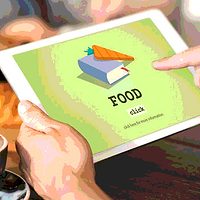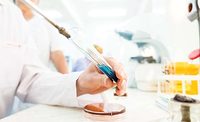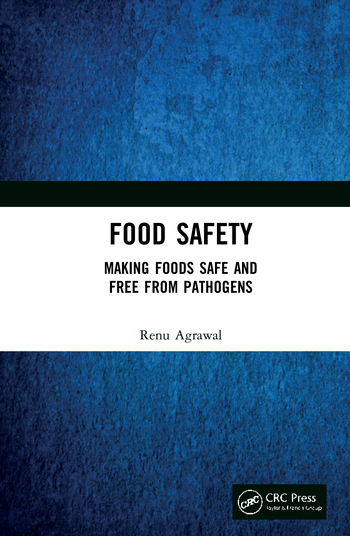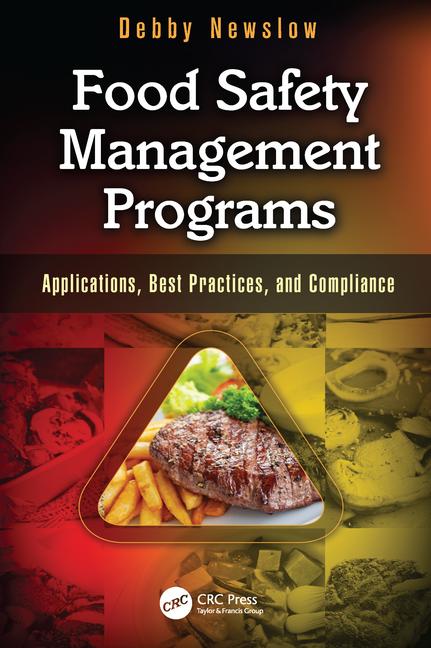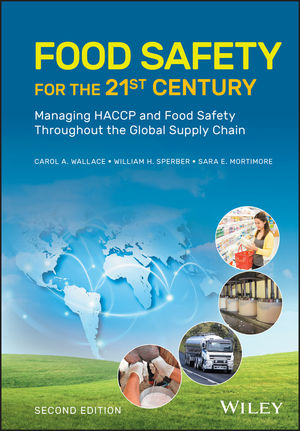Is AI 'Food Safe?'

Image credit: mutarusan via Getty Images
Artificial intelligence (AI) is a hot topic of research in computer science. One of its goals is to enable the processing and analysis of large data sets; then, machine learning algorithms make it possible for AI to acquire knowledge from this data and predict the future occurrence of events. This might mean, for example, that food product recalls could be prevented and critical machinery failures could be anticipated, thereby allowing for early execution of preventive actions.
The application of AI in food safety includes foodborne pathogen detection, identification, and characterization; enhanced public health systems; and food safety risk prediction, monitoring, and optimization along the supply chain.1 For a food safety professional, AI could be a helpful tool. An essential part of a food safety plan is the hazard analysis, which must be done for ingredients and process steps within the framework of each product's Hazards Analysis and Critical Control Points (HACCP) plan. The hazard analysis involves significant research from literature, recall databases, government agencies, and news in order to determine the biological, physical, and chemical hazards associated with the product and to assess the frequency and severity of each hazard. This is a time-consuming and laborious process. AI offers the opportunity to assist with compiling this information in a much shorter period of time, while processing much larger data sets than a human being.
Data Collection and Quality are Key
Certain components of the food safety plan, like preventive maintenance and environmental monitoring, can benefit from the predictive characteristics of AI; however, the quality of the data fed into the system is critical. Using unreliable data could cause AI to overestimate or underestimate risks and provide incorrect information, thereby complicating a food safety professional's job. Let us consider a company that has never had a recall or pathogen finding, for example. How would AI predict an existing food safety issue in this case? Not finding a pathogen does not necessarily mean it does not exist in the plant; it may just mean that the facility's food safety team has not sampled the "right spot" where bacteria is hiding. In such a case, the report from AI would be misleading.
Data collection is an important component of AI performance. For food safety, data sources include online databases, sensor data, genomics data, and social media. However, the diversity of the data also presents difficulties, making it hard to find pertinent information within a data source and its relationship to other data sources.2
To generate, collect, and analyze data effectively, as well as to achieve useful prediction powers, outstanding levels of systems automation and integration must be achieved. Big players in the food industry could invest in such networks, but the smaller players may not be able to invest in this technology. The financial resources needed to automate are very high, and not all companies can afford such projects; thus, it could be some time before AI use is widespread across the food industry. The data must also be linked to agencies such as the U.S. Food and Drug Administration (FDA) or the Canadian Food Inspection Agency (CFIA); therefore, the government must assist industry so that AI can be fully integrated.
Software using AI applied to the food industry already exists in the market, and stakeholders use their output to make decisions that have the potential to impact food safety. Although having such sophisticated tools is very productive, it is important to consider how the output coming from it can be ensured to be reliable. Let us consider that, in general, individuals responsible for food safety programs are not experts in computer science or AI. They are most likely food scientists or microbiologists, or have a science-related background. This leads to another question: How is a person who does not have a background in computer science supposed to validate and challenge AI?
Validation is Necessary for AI Use in Food Safety
Protocols are needed to validate information provided by computers. Out of curiosity, I once asked ChatGPT to write a hazard analysis on nuts. It provided me with a comprehensive summary that I knew was accurate, since I have significant experience doing hazard analysis for that type of product. If I did not have that experience, however, I could either trust ChatGPT or do the hazard analysis in the traditional way to make sure, thus defeating the purpose of asking ChatGPT in the first place.
The misusage of AI has already been seen. Recently, Forbes reported that a lawyer in Manhattan used ChatGPT to write a Federal Court filing for an injury lawsuit case.3 The AI bot created from nowhere and cited at least six different cases to support its own analysis. This may be seen as a case of extreme negligence, but it goes to show that AI can actually create and manipulate data and then present this data as real. One can imagine the impact of something similar happening in the food industry. A food safety professional could be misled and make a decision that could impact public health based on fake data or regulations.
It is clear that the responsibility of food product safety falls on the manufacturer and stakeholders involved in the product supply chain. Each facility must ensure that proper procedures are in place to comply with food safety regulatory requirements and avoid food safety incidents. This includes the validation of any computer software used to monitor the process. However, if food safety systems are supported by AI-based software, and decisions that could impact public health are made based on the data they provide, then is a regulatory framework for this type of software necessary? Should the government establish basic rules for them, just as it does for food manufacturing? If AI contributes to the occurrence of a food safety incident, is the accountability for the incident entirely on the manufacturer?
It is important to control the use of AI-based software inside of a food manufacturing company. Internal policies must avoid its abuse to increase efficiency and hold employees accountable for the outcome. The integration of AI in a company's operation must be accompanied by clear protocols established by qualified individuals to validate that the information is reliable.
Advancements in technology are key to improve industrial processes, but the industry's infrastructure must be ready to assimilate and control it. I am not against AI for enhancing industrial process performance, but I believe there should be more focus on regulating its usage and defining its scope within a food safety plan.
References
- Qian, C., et al. "How Can AI Help Improve Food Safety?" Annual Review of Food Science and Technology 14, no. 1 (March 2023) 517–538. https://doi.org/10.1146/annurev-food-060721-013815.
- Zhou, Qinqin, et al. "Artificial Intelligence, Big Data, and Blockchain in Food Safety." International Journal of Food Engineering 18, no. 1 (January 2022): 1–14. https://doi.org/10.1515/ijfe-2021-0299.
- Novak, M. "Lawyer Uses ChatGPT In Federal Court And It Goes Horribly Wrong." Forbes. May 27, 2023. https://www.forbes.com/sites/mattnovak/2023/05/27/lawyer-uses-chatgpt-in-federal-court-and-it-goes-horribly-wrong/?sh=1d7466d23494.
Looking for a reprint of this article?
From high-res PDFs to custom plaques, order your copy today!




